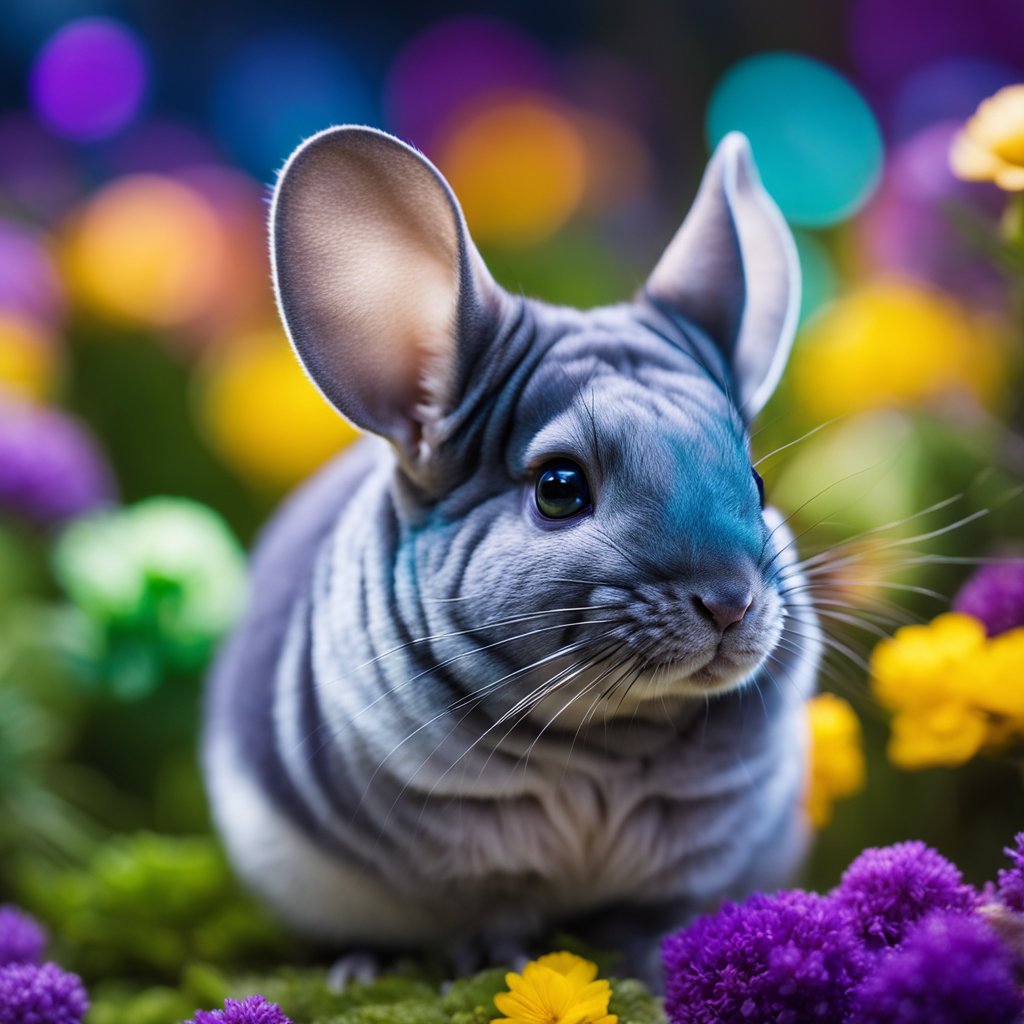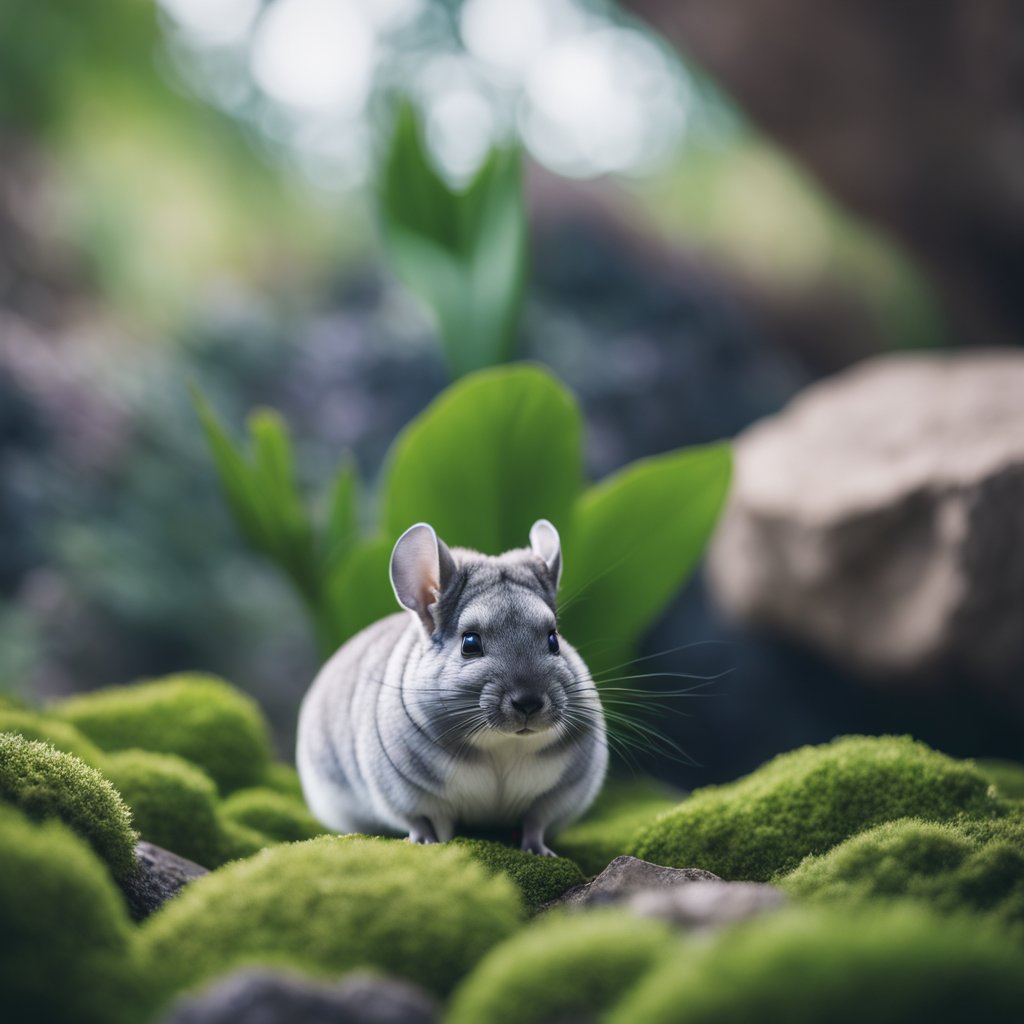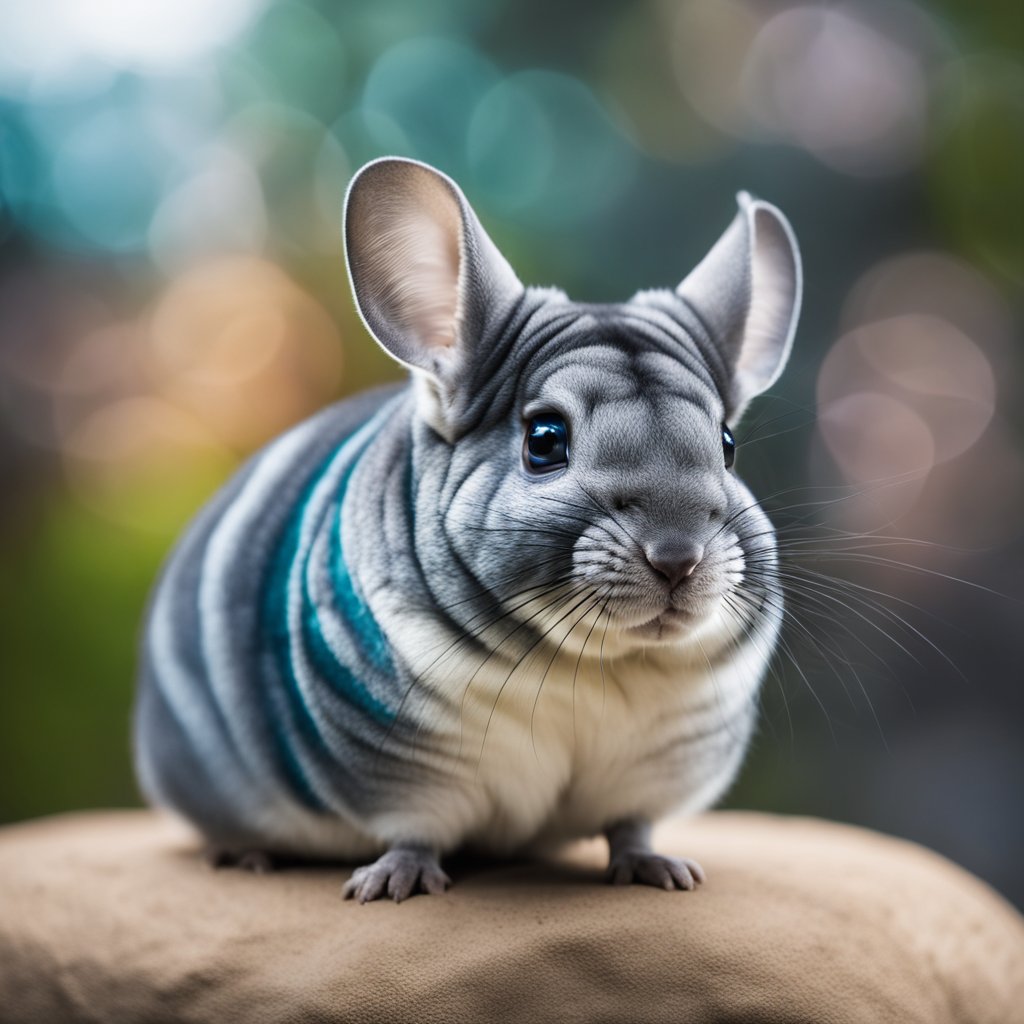What Colors Can Chinchillas See?: Understanding Their Visual Spectrum
Chinchillas are fascinating pets with unique adaptations, including their vision. They primarily see the world in shades of blue and green, but they cannot perceive red or similar warm colors. Understanding what colors chinchillas can see helps owners create a better environment that caters to their pets’ needs.

These small rodents possess dichromatic vision, which limits their color range. This means their perception differs significantly from that of humans. Knowing how chinchillas perceive colors also allows owners to choose toys and habitats that are more visually appealing to their pets.
By exploring the details of chinchilla vision, pet owners can enhance their pets’ quality of life. Learning about their visual capabilities can lead to better care and a deeper connection with these charming animals.
Key Takeaways
- Chinchillas mainly see blue and green shades.
- They cannot see red or warm colors.
- Understanding their vision enhances pet care.
Chinchilla Vision Overview
Chinchillas have unique vision capabilities shaped by their anatomy and environment. They have adapted to see well in low light and can perceive a limited range of colors, which influences their behavior and interactions.

Anatomy of the Chinchilla Eye
The structure of a chinchilla’s eye is designed for their survival. They have large eyes that provide a wider field of vision, helping them detect predators. The lens and retina are specially adapted to enhance night vision.
Chinchillas possess a reflective layer called the tapetum lucidum, which assists in improving visibility in dim conditions. This feature is common among nocturnal animals.
The eyes are located on the sides of their heads, allowing for nearly 360-degree vision. This wide range offers excellent peripheral awareness, crucial for spotting threats in their surroundings.
Visual Capabilities
Chinchillas are dichromatic, which means they primarily see two colors: blue and green. They lack the ability to perceive red, so reds appear as shades of gray to them. This limited color vision helps them distinguish important elements in their environment.
While their color perception is restricted, chichillas have good motion detection. They can notice movement well, which can aid in avoiding dangers like predators. This ability is linked to their reliance on other senses, such as hearing and smell.
Their vision is not sharp, meaning they see things more blurry than humans do, as they are not equipped for detailed observation.
Light and Dark Adaptation
Chinchillas are excellent at adapting to various light levels. They have good night vision, allowing them to navigate through their habitat with ease during low-light conditions. This skill is crucial since they are crepuscular, being most active during dawn and dusk.
In bright light, their eyes respond by constricting pupils to protect against glare. They are sensitive to rapid changes in light, making gradual transitions easier for them.
These adaptations help chinchillas thrive in their natural habitats. They can quickly adjust to changes in light, ensuring they can react to potential threats or find food.
Color Perception in Chinchillas

Chinchillas have a unique way of seeing the world. Their color vision differs from that of many other animals, including humans. This section explores the spectrum of colors they can perceive, how their vision compares to that of humans, and how these differences affect their behavior.
Spectrum of Visible Colors
Chinchillas are dichromatic, meaning they have two types of cone cells in their retinas, allowing them to see primarily blue and green. Reports suggest that they lack the cone responsible for detecting red. This limitation means that colors appearing red to humans may appear as shades of gray or even black to chinchillas. Their visual world can be described as cooler-toned, focusing on blue and green shades.
In a practical sense, chinchillas can differentiate between various shades of blue and green, enabling them to spot food and navigate their environment. The limited color spectrum is adaptive for their needs in the wild, where bright colors might not be as essential for survival.
Comparison to Human Vision
Human vision is more advanced due to trichromacy, which allows for a wide spectrum of colors, including red, green, and blue. Chinchillas, with their dichromatic vision, experience a significantly narrower range.
Humans have three types of cone cells to perceive colors, providing a rich experience that includes vibrant hues. In contrast, chinchillas’ eyes are specially adapted for detection in low light, enhancing their night vision. This adaptation is essential for a primarily nocturnal lifestyle.
The difference in color perception means chinchillas may react differently to colors in their environment compared to humans. For example, colorful toys or objects that attract human attention may not hold the same appeal for these animals.
Impact of Color on Behavior
The way chinchillas perceive colors influences their interactions and activities. Colors play a role in determining their comfort, stress levels, and exploration habits. For instance, they may prefer environments with softer blue and green hues, which appear more natural and soothing.
In captivity, the use of toys or bedding in colors like blue or green may encourage chinchillas to engage more with their environment. Observing their reactions to different colors can offer insights into their preferences and comfort levels.
Understanding these color perceptions can help pet owners create more enriching and appealing habitats for their chinchillas. This awareness leads to happier and healthier pets.
Behavioral Aspects of Vision

Chinchillas use their vision for several important behaviors. Their ability to see certain colors and shades helps them find food, move through their environment, and interact with others.
Locating Food
Chinchillas rely on their visual perception to find food. They can distinguish between shades of blue and green, which helps them locate various plants. This is important in their natural habitat, where food may blend into the surroundings. They may not see colors like red well, making their vision primarily dependent on contrast and brightness rather than a wide range of colors.
The strong contrast between green plants and a gray background aids them in identifying edible items. While their vision is not as sharp as that of some animals, they can spot movement and changes in their environment, assisting them in foraging efficiently.
Navigating Their Environment
Chinchillas also use their limited color vision to navigate. Their good night vision allows them to move around safely during dusk and dawn when they are most active. They observe their surroundings for obstacles and potential threats.
Because their vision is somewhat blurry, they depend on their other senses, particularly hearing and smell, to fill in the gaps. The combination of these senses enables them to create a mental map of their habitat, helping them avoid predators and find shelters.
Social Interactions
When it comes to social behavior, chinchillas use their vision to communicate with one another. They can recognize other chinchillas through their visual cues, especially when using body language and movement. The ability to see shades of blue and green also plays a role in their social dynamics.
During interactions, chinchillas may rely on visual signals to establish dominance or courtship. Their vision supports their ability to observe the behaviors of others, allowing them to respond appropriately. This visual awareness enhances their social structures, aiding in bonding and maintaining group hierarchies.
Environmental Influences on Vision

Chinchillas view the world differently due to their unique visual system. The way they see their environment can be affected by various factors including lighting, habitat design, and enrichment activities. Understanding these influences can help enhance their living conditions and overall well-being.
Lighting Conditions
Lighting plays a crucial role in how chinchillas perceive their surroundings. Chinchillas are sensitive to bright lights, which can cause stress. Soft, natural lighting is preferable.
- Natural Light: Chinchillas thrive in dim environments with filtered sunlight.
- Artificial Light: Fluorescent and LED lights can be harsh, so it is best to avoid them.
Maintaining a consistent light-dark cycle helps chinchillas feel secure and allows them to adapt to their environment. It is important to create a balance that mimics their natural habitat.
Habitat Design
The design of a chinchilla’s habitat can also greatly affect its vision. A well-structured environment should include areas that cater to their visual needs.
- Shaded Areas: Provide dark or shaded spots where chinchillas can retreat if they feel overwhelmed.
- Colorful Structures: Using toys and accessories in shades of blue and green can help stimulate their limited color vision.
An environment designed with their visual abilities in mind can reduce stress and help them navigate their space effectively.
Enrichment Activities
Various enrichment activities can enhance a chinchilla’s visual experience. Engaging their senses can help improve their overall health.
- Interactive Toys: Providing toys in colors they can see well encourages play and exploration.
- Foraging Opportunities: Scatter food in different areas to motivate them to search and explore.
These activities not only engage their vision but also promote physical and mental health. Keeping their environment stimulating is essential for their happiness.
External Resources

For those seeking to learn more about the color vision of chinchillas, several reliable online resources are available:
- Chinchilla Color Vision
This article explains how chinchillas see primarily in shades of blue and green, lacking the ability to perceive red. Visit What Colors Can Chinchillas See? for detailed insights. - Understanding Chinchillas’ Vision
Learn about how chinchillas view their environment and how this affects their behavior. For more information, see The Color Spectrum: Exploring What Colors Chinchillas Can See. - Chinchilla Eye Health
This source discusses chinchilla eyesight, including their good night vision and how they perceive colors. Check out How Good Is a Chinchilla’s Eyesight? for more.
These resources provide valuable information for pet owners and enthusiasts interested in understanding how chinchillas experience the world through color.
Frequently Asked Questions

Chinchillas have unique visual abilities that differ from those of humans. Their eyesight plays an important role in their daily activities and interactions with their environment.
Do chinchillas have dichromatic vision?
Yes, chinchillas possess dichromatic vision. This means they have two types of color receptors in their eyes. They primarily see blue and green wavelengths but have limited ability to perceive reds.
How does a chinchilla’s vision compare to human sight?
Chinchillas see fewer colors than humans. Humans have trichromatic vision, allowing them to see a broader spectrum of colors. Chinchillas are more sensitive to motion, which helps them navigate their environment.
Can chinchillas perceive colors at night?
Chinchillas can see in low light conditions, but their color perception is limited. They rely more on their ability to detect movement in dim light rather than identifying colors. This adaptation is useful for their nocturnal lifestyle.
What color spectrum is visible to a chinchilla?
Chinchillas can see shades of blue and gray, with a reduced ability to see other colors. Their vision helps them detect potential threats and navigate their surroundings.
Are there specific color lights that are beneficial for chinchillas?
While chinchillas may not be able to see all colors, they can respond well to certain wavelengths. Soft blue or white lights are generally preferred in their habitats, as they are less harsh and more calming.
How does the quality of chinchilla eyesight affect their daily activities?
Good eyesight is essential for chinchillas. It helps them find food, avoid dangers, and interact with their environment. Impaired vision can lead to stress and difficulties in social interaction, affecting their overall well-being.
See also:
Can hedgehogs see ?

